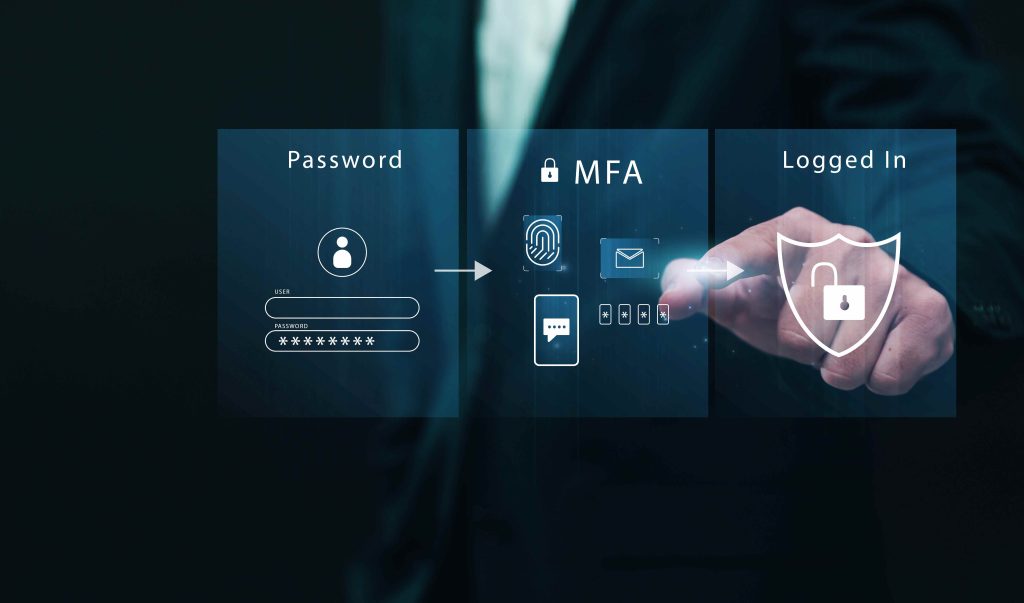In construction, cybersecurity is more than a tech concern—it’s essential for protecting your business, data, and clients. With sensitive project details, employee information, and financial data on the line, a single breach can lead to severe financial and legal consequences.
By prioritizing cybersecurity compliance, you safeguard vital data while fulfilling legal and contractual obligations that keep your firm competitive and trustworthy in the digital age.
Identifying Compliance Standards
Several cybersecurity standards might apply to your firm, depending on your projects and clients. Key standards to be aware of include:
- NIST Cybersecurity Framework: Developed by the National Institute of Standards and Technology (NIST), this framework offers best practices for managing and reducing cybersecurity risk. It’s widely used across industries.
- CMMC Standards: If you work on government projects, especially those for the Department of Defense, compliance with the Cybersecurity Maturity Model Certification (CMMC) is a must. It’s designed to protect Federal Contract Information (FCI) and Controlled Unclassified Information (CUI).
- ISO 27001: This international standard focuses on information security management systems. ISO 27001 certification isn’t always required, but it demonstrates your firm’s commitment to securing sensitive data.
Each of these cybersecurity compliance standards provides a framework, but the requirements may vary. For guidance specific to Oregon’s construction sector, check out fixedfeeit.com in Portland or other trusted resources to help determine which standards apply and how to implement them effectively.
Conducting a Risk Assessment
A thorough risk assessment helps you identify where your firm’s cybersecurity vulnerabilities lie. Begin by listing all digital assets—computers, smartphones, servers, and any other devices connected to your network, including those used on job sites. Then, consider potential threats, both internal (like employee mistakes) and external (such as cyberattacks). This inventory highlights weak spots in your network.
Next, assess each vulnerability’s potential impact on your operations, finances, and reputation. For instance, outdated software and weak passwords might leave doors open to attacks. Understanding these risks gives you a roadmap for addressing your firm’s most urgent needs, helping you allocate resources effectively and prioritize security improvements where they’re needed most. It’s also wise to evaluate cloud security defenses to uncover vulnerabilities in cloud environments that construction firms often rely on for project management, data storage, and collaboration.
Creating a Cybersecurity Policy
A clear, comprehensive cybersecurity policy is the backbone of compliance. Your policy should outline the procedures and protocols for handling sensitive information and respond to security incidents. Here are the key elements to include:
- Access control: Define who can access specific systems and data, including project management software and on-site devices. Limit access to sensitive information based on job roles.
- Data protection: Specify how data should be stored, transmitted, and disposed of securely.
- Incident response: Detail steps to take in case of a security incident, including reporting and containment.
- System monitoring and logging: Establish protocols for continuous monitoring of network activity and maintain logs of system access and actions. Regularly reviewing these logs helps detect unusual activity early, allowing you to address potential issues before they become serious.
This policy should be regularly updated, accessible, and reinforced through mandatory training.
Training Your Workforce
Human error is a common cause of security breaches, making employee training crucial to cybersecurity. Educate your team on key compliance practices, including recognizing phishing attempts, securing passwords, managing job site devices, and following incident reporting protocols. Emphasize practical skills, like avoiding public Wi-Fi on construction sites and securing personal or company-issued devices used for work.
Regular training sessions, along with mock phishing tests, ensure employees understand and follow these protocols. By reinforcing these responsibilities, your workforce becomes a vital part of your cybersecurity defense, especially given the field-based nature of construction work.
Using Secure Technologies
Technology choices play a big role in cybersecurity compliance. From secure cloud storage to encrypted communication tools, selecting the right technologies helps you stay compliant and protect sensitive project data. Essential tools and practices to consider include:

- Encryption: Encrypt sensitive data, both at rest and in transit, to protect it from unauthorized access. This is especially crucial for blueprints, contracts, and client information.
- Multi-Factor Authentication (MFA): Require MFA for accessing company accounts and systems, including project management platforms and site-specific applications. It’s an added layer of security that’s simple yet effective.
- Secure backup solutions: Regularly back up data and store backups in secure, off-site locations. This practice ensures quick recovery in case of a cyberattack or data loss, minimizing disruption to ongoing construction projects.
- Network security: Use firewalls, antivirus software, and regular system updates to protect your network, especially for on-site networks and mobile devices.
As construction firms evolve to meet new standards, it’s important to integrate systems that streamline compliance and operations. Implementing technology like EDI capabilities enhances your firm’s structure by automating data exchanges and ensuring accurate information handling, supporting rigorous cybersecurity protocols.
These technologies provide foundational security, making it harder for attackers to infiltrate your systems.
Documenting Compliance Efforts
Documenting cybersecurity activities shows your commitment to compliance and safeguards your firm in case of an audit. Keep a record of risk assessments, policy updates, training sessions, and incidents to provide a clear trail for verifying compliance.
Regular updates to these records are essential. Summaries of assessments, policy changes, and incident responses demonstrate that your firm actively prioritizes cybersecurity. This documentation is invaluable for both internal reviews and external audits, especially when overseeing multiple job sites or contracts.
Regularly Reviewing and Updating Security Measures
Cyber threats evolve, and so should your security practices. Regularly review your cybersecurity measures to ensure they align with current threats and compliance requirements. Schedule annual risk assessments and update your cybersecurity policy as needed. Staying proactive helps you catch potential vulnerabilities before they become issues.
Additionally, keep an eye on updates to compliance standards. As regulations change, your firm needs to adjust to remain compliant. This approach saves you the headache of scrambling to meet new requirements at the last minute.
Final Thoughts
Cybersecurity compliance is a vital aspect of running a modern construction firm. By understanding applicable standards, conducting regular assessments, implementing strong policies, and training your workforce, you can create a resilient defense against cyber threats.
Compliance isn’t just about meeting regulations; it’s about protecting your business and the people you serve. By staying proactive and diligent, you’re investing in a secure future for your firm and your clients.





